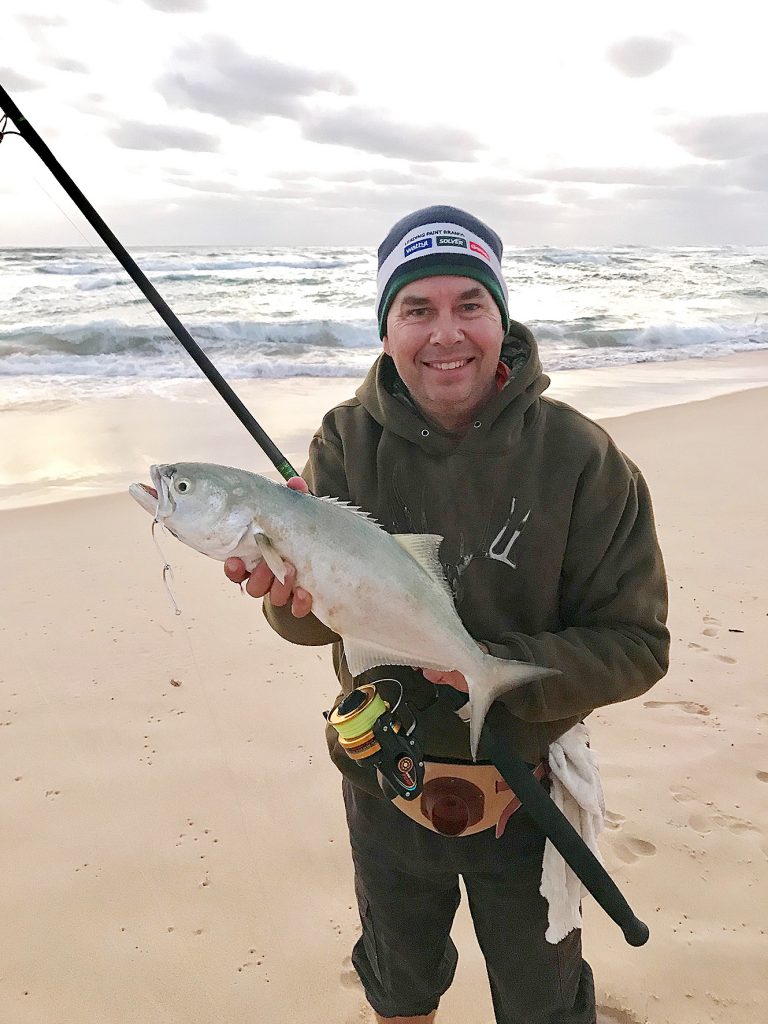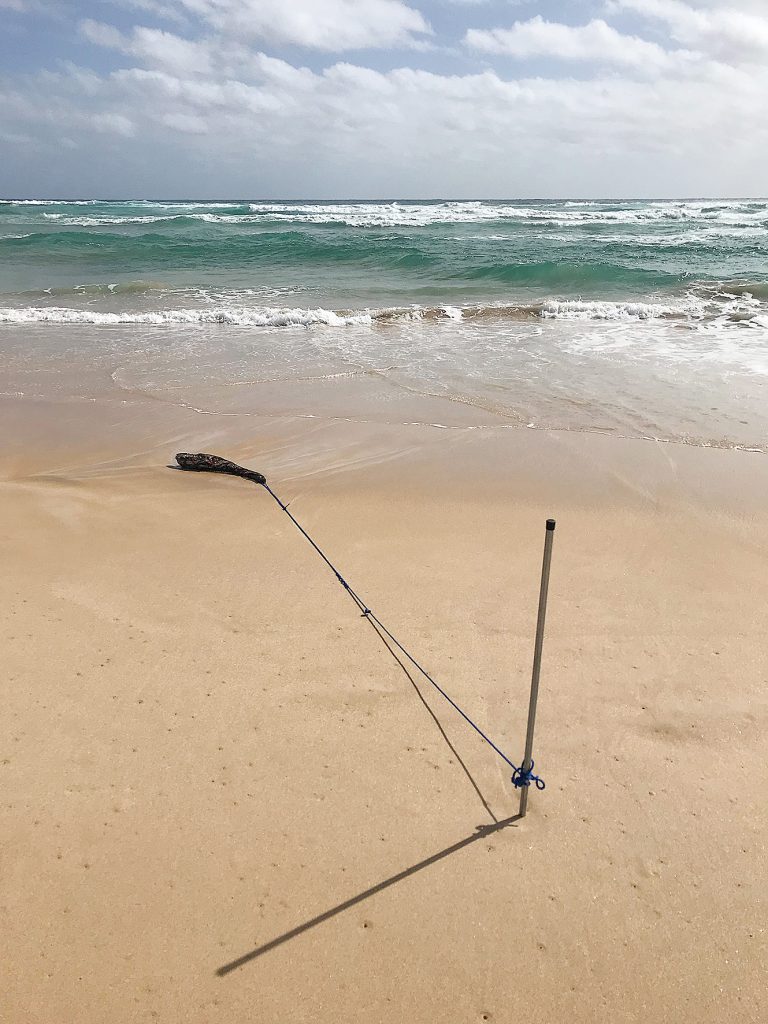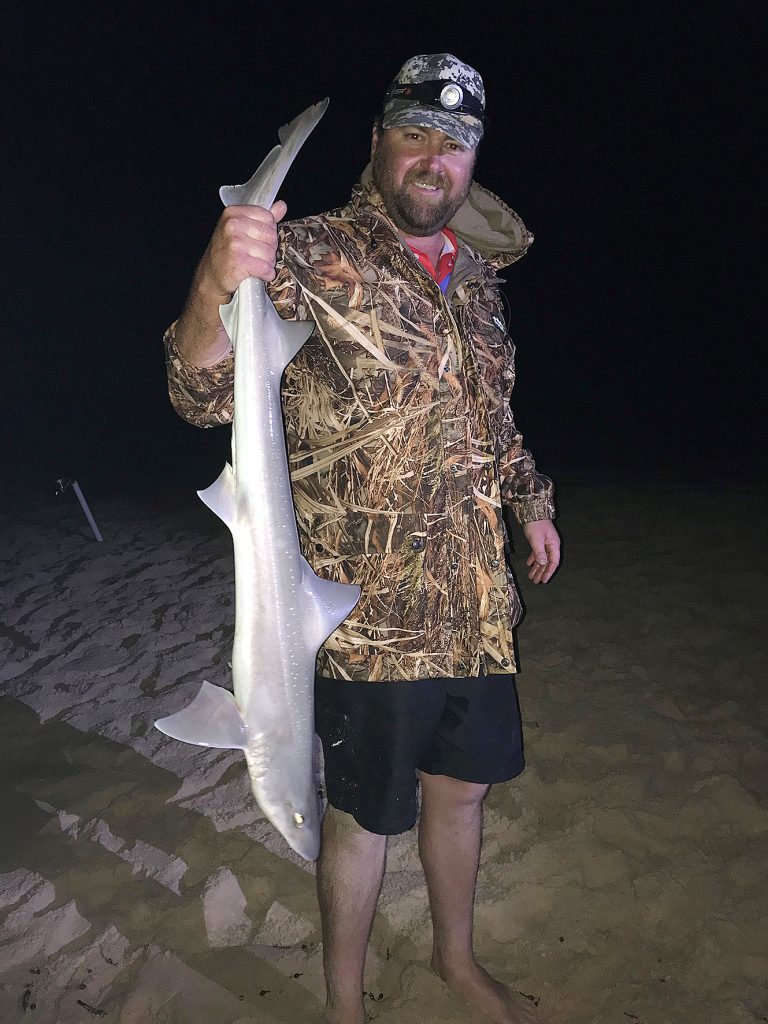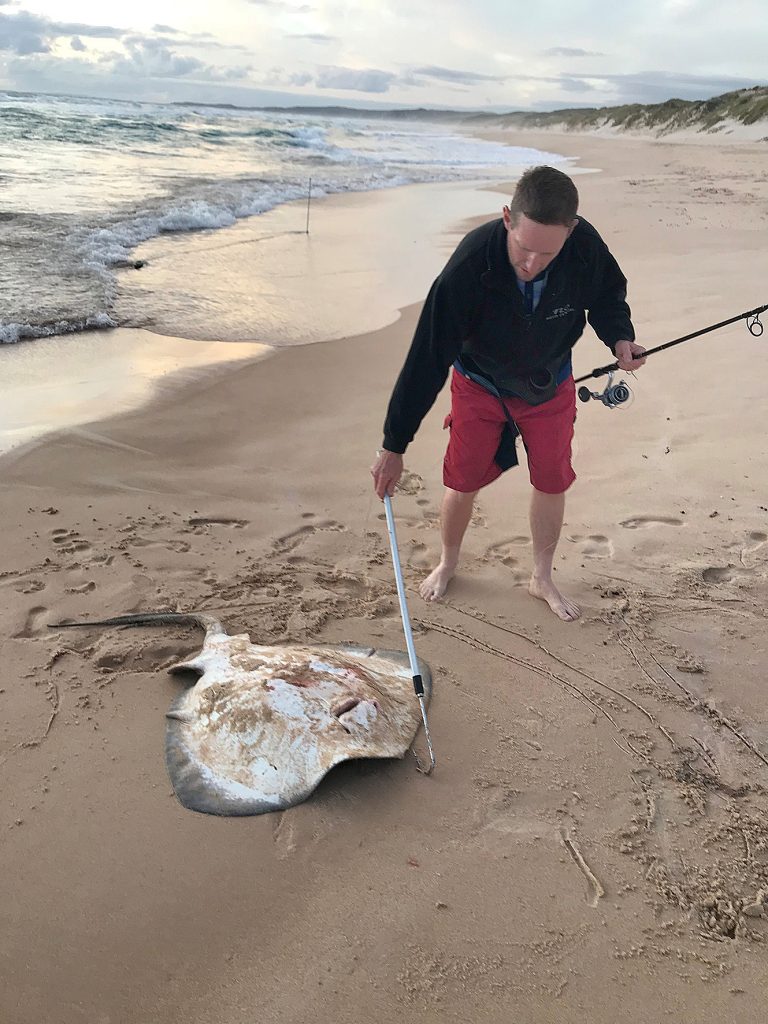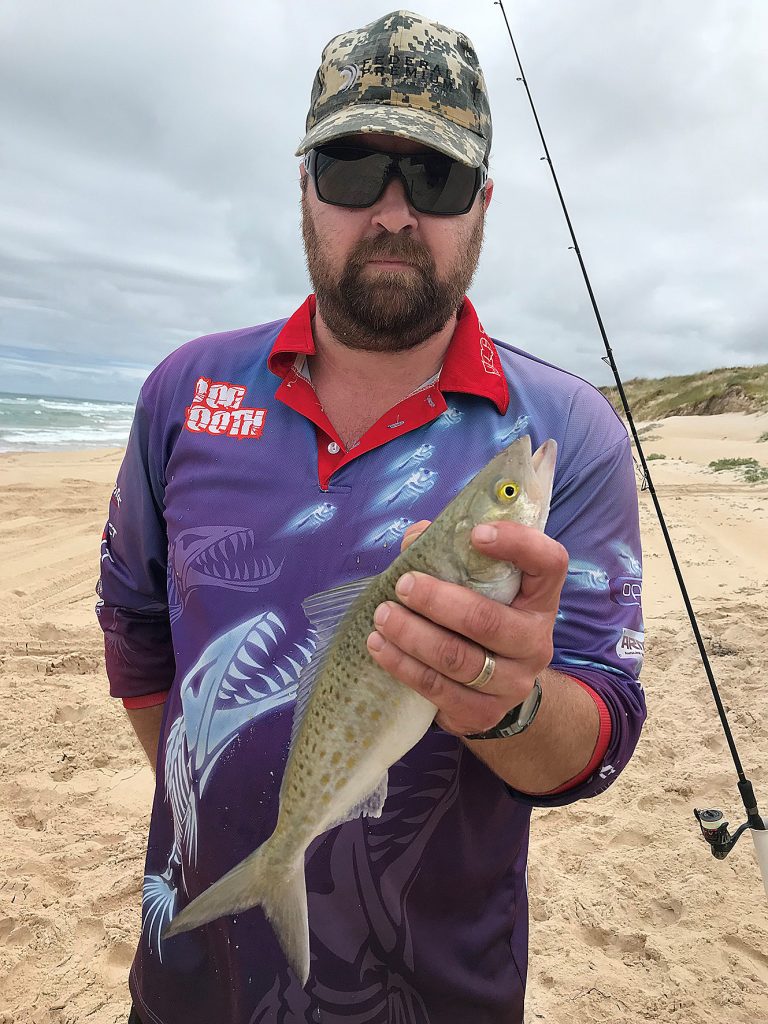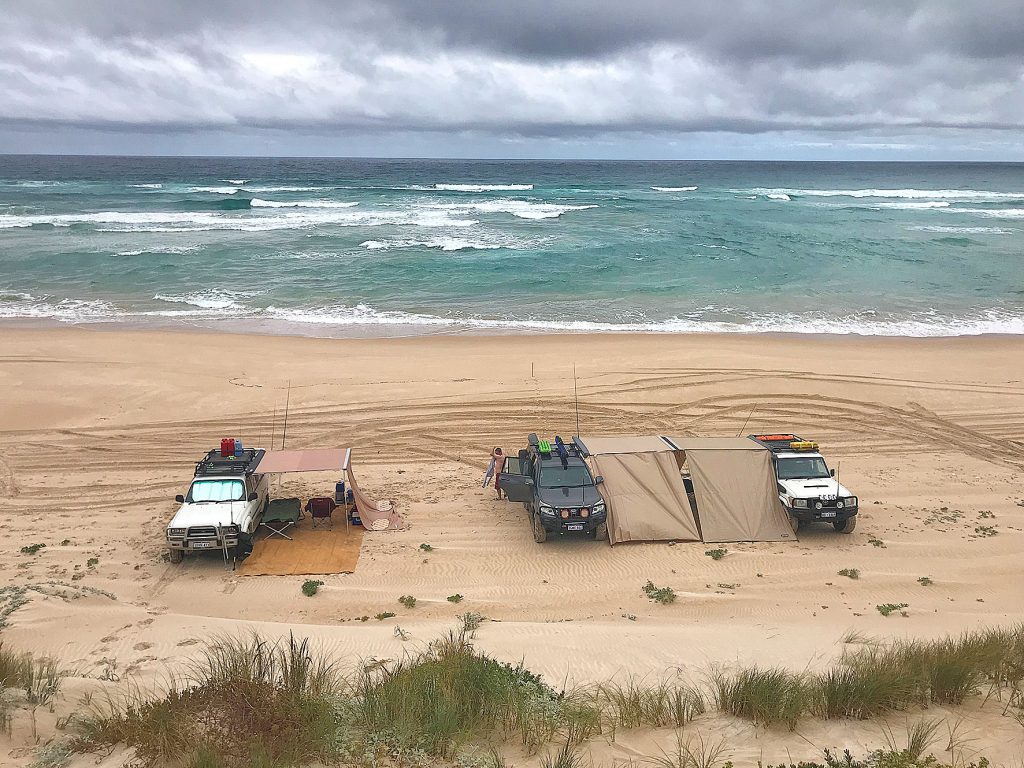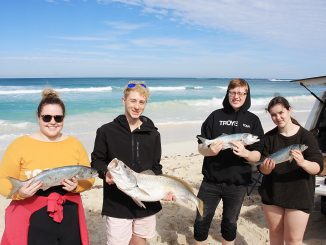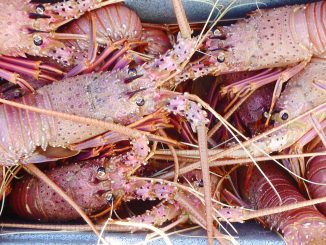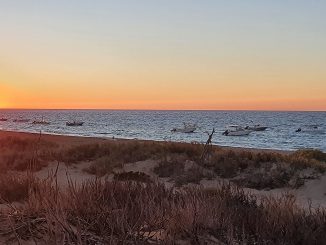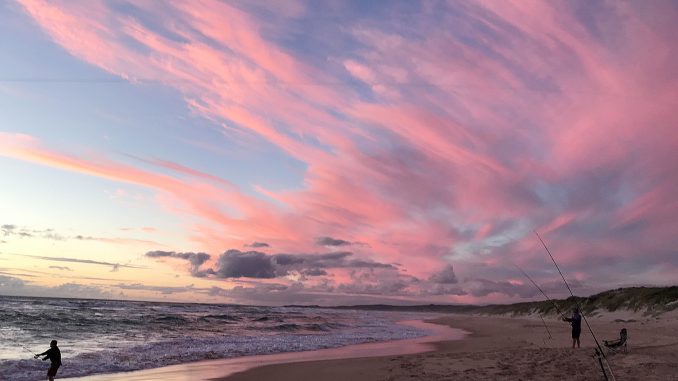
by Kurt Blanksby •
From Augusta heading east towards Esperance, the Southern Ocean coastline is truly unspoilt and wild. Rocky granite and limestone headlands and ledges make up a big part of this coast and hold a reputation for being some of the best land-based fishing spots in the state. In this part of the world, it’s the beaches that stretch between the rocky sections that are not only much safer to fish, but also turn on the goods when it comes to fishing!
Getting there
Although these beaches can be fished all year round, it’s the period from March through to early May that I prefer, as they often provide calmer conditions and clean water, allowing easy identification of fish holding gutters and channels. Beach access to most is via many well-worn 4WD tracks leading off the main roads, and these can be easily found by studying Google Earth or Nearmaps if you have access to it.
If you are precious about getting scratches on your paintwork, then this is probably not for you, but a 4WD is the only way to access these locations, so it is a small price to pay. Once you near the coast and finally descend onto the beach your sand driving skills will be tested, and dropping your tyre pressure down to about 15psi is the go.
Getting set
It’s best to arrive at the beach during the day so you can easily spot the best gutters and channels running close enough to cast into, as this is where the fish will be feeding. These are easy to spot, as the deeper water will be a darker colour next to the many sand banks where the water will usually be feeding in from one end and funnelling back out to sea at the other. Once located, the car is parked and set up back near the dunes and a basic camp is established.
Thankfully, camping on the South Coast beaches is still permitted, and I must say that rubbish is never a problem as those who fish these spots are smart enough to take it out with them. Keep the place clean and don’t give the authorities any reason to ban it.
The next step is a very important one that many don’t bother with, and that is establishing a good berley slick to start attracting fish into your casting area. Using a steel or wooden stake and a scaling bag you can set up a berley bag that washes around on the shore with each wave, spreading a good scent back out with every receding wave. Crushed up pilchards, prawn heads, fish scraps and a good splash of fish oil and you will have a mixture that will attract fish into the vicinity.
Species
Smaller species are usually the first to turn up, with the ever-popular herring being the most common. These great little fish not only make pretty good eating, they are also great whole or filleted into strips to use as bait for bigger species. Small hooks and a bean sinker rig on a light rod will usually see you into the herring pretty quick, and the same goes for shiny metal slice lures wound back through the surf. Sand whiting are also another common catch on light tackle and small bits of bait, and this species also make a good meal or whole bait.
From March onwards the annual salmon run makes this part of the coast very attractive to beach anglers, as big numbers of these fish migrate along the coast and invade every beach gutter looking for a feed. Averaging around the 4-6kg mark, they are a very popular fish and will give you plenty of thrilling moments and a tough, jump-filled fight in the surf. Usually caught on baits of whole pilchards on ganged hooks or pieces of squid, salmon will keep you on your toes from the moment they are hooked until you finally land them.
If you feel like a bit of fun, then lighter spinning outfits and lures like metal slices and poppers will turn a hoard of hungry salmon into a ravenous pack, all shouldering each other out of the way to get to the lure first. Again, if bled and iced down soon after capture they are actually pretty good to eat, but many are targeted as a sportfish and released back into the water.
Smaller salmon around the 0.5-2kg size are known as salmon trout and resemble a very big herring. The lack of black spots on the tip of the tail is a dead give away that it is a juvenile salmon, and they can be in big numbers at times from the southern beaches.
Sharks of several species are often hooked from these southern beaches, especially if the salmon are about, as they are often followed by them right into the beach line. Bigger baits on heavy tackle set out will usually get the interest of any sharks cruising in to find out where the berley smell is coming from. It goes without saying that heavy gear is needed and wire trace and strong hooks are a must, as some of these creatures are practically unstoppable.
It’s mostly whaler sharks that are encountered, but other species do turn up from time to time and can provide some exhausting battles on the right gear. Thankfully, most are released after a few pictures, as they do serve a purpose in our ocean and shouldn’t be killed for no reason. Smaller whaler sharks and the much-prized gummy shark are top eating and fishing baits at night will be the best way to hook into these species.
Mulloway are the number one prize from the beach anywhere along the South Coast and some truly massive specimens over 20kg get landed every year. Most seem to be around 3-12kg and usually turn up after dark on larger baits and heavy beach tackle. A good rising tide is always best, and if you can find this happening after dark then you are in with a real chance at picking up gummy sharks and mulloway.
Big silver trevally, otherwise known as skippy, are also high on the target list for many anglers from the surf, and they like the deeper gutters and respond well to a good berley trail. Most are hooked on a whole pilchard fished with gang hooks, but occasionally they’ll take lures.
Tailor on the South Coast are usually always big, with fish from 2-5kg being the norm. Whole pilchards or fish fillet strip baits on ganged hooks are most effective on these South Coast tailor, and they actually make good eating if bled and iced soon after capture. It is not uncommon to pick up the occasional large tailor from amongst the salmon schools when they are moving through.
Blue spot flathead, like the tailor, are usually big on the South Coast surf and some truly bragging-sized flatties are caught each year at the end of summer. It’s not as common, but certainly a welcome sight to see one wash up on a wave on the end of your line, and without doubt one of the best eating species you will catch.
The only problem with setting up a good berley trail is that big stingrays will no doubt pay you a visit and result in a long tug of war. It’s best to carefully drag them ashore where they can be flipped on their back and hooks removed. They should then be flipped back upright and allowed to swim fee. Usually they don’t hang around, and you can wait for more desirable species to turn up. Be extremely careful of their powerful tails armed with long spines coated in venom, and never get complacent around a sting ray, as they can deliver a deep wound and intense pain if you suffer a sting. Safety again springs to mind when handling any sharks armed with teeth, so remember that these are dangerous creatures.
A few little tips
The species mentioned are all a chance when you spend a couple of days and nights fishing a good gutter on a beach and there are a few other things you will definitely want to remember when doing so.
PVC sand spikes and lots of them will keep your reels out of the sand and allow you to set out baits and sit back and relax. On that note, don’t forget to pack the camping chairs, as an upturned bucket soon becomes a very uncomfortable seat.
Warm clothes are a must, as even though the days might be balmy and pleasant, at night – or if a southerly wind picks up – you will need layers of clothes to keep warm. Throw in a beanie to keep your head happy as well.
Good lights around camp and a head lamp for night fishing is also a must, and make sure you have fresh batteries fitted in them.
A decent-sized esky with enough ice to keep your catch fresh is a good idea, and a decent car fridge will keep drinks and food cold and fresh for your stay. Don’t forget to take enough bait if you are there for a few days, and this can be supplemented with smaller species like herring and whiting that you catch.
Plenty of spare rigs, hooks, sinkers and leader material should be on hand to cover both light and heavy options. Pack wire trace and stronger hooks if you are chasing sharks, and a gaff is always handy if something big is eventually brought close enough in to land in the surf.
Finally be courteous to other beach users, and don’t just rock up and set up camp right on top of others who arrived there first, even if the gutter they are fishing looks amazing. It is first in best dressed, so keep a reasonable distance between you and others. This is not such a stupid idea, as setting up a berley trail in your own gutter away from others will mean that any decent fish moving in to feed will be finding your baits first. Remember to stick to size and bag limits, clean up your mess and stay safe, and you will enjoy the beach fishing the South Coast has to offer.

